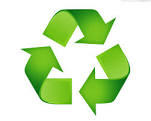National Waste Consultants, LLC - Recycling Program
At National Waste Consultants, LLC we specialize in recycling large bulky items primarily in volume. The items that we remove from the waste stream and recycle include: appliances (items with or without freon), mattresses, box springs, plastic (#1-5), cardboard,
scrap metal (ferous & non-ferous), and carpet padding. We are always open to expanding our operation to include new items as markets for these materials become available.
Appliances: We process and recycle over 50 tons of appliances each week. We accept all major appliances with or
without compressors.
Mattresses and Box Springs: Our goal is to recycle 100% of each item. We do this by deconstructing items such as mattresses and boxsprings into marketable recyclable materials.
A standard mattress and box spring consist primarily of steel, polyurethane foam, cotton and other fabric, and wood. Good recycling markets usually exist for the steel, and markets could also likely be found for the foam.
Because of the condition of the fabric and wood that comes out of old mattresses and box springs, those materials currently have few reliable markets. The value of the recycled materials alone will not cover the costs of
mattress and box spring recycling. However, mattress recycling may make sense financially as an alternative to landfills, if you take into account the true costs of landfilling, according to a report by the International Sleep Products Association's Mattress
Disposal Task Force. Landfill equipment operators hate mattresses. Driving giant bulldozer-type machines, their goal is to pack the garbage down tightly before it is covered.
But mattresses don't compact well. Even worse, the mattress springs pop out and get tangled in the equipment, often damaging it. Because mattresses are so difficult to handle, landfills around the nation have increased the fees they charge
to accept mattresses, especially in large quantities.
Plastics: The easiest and most common plastics to recycle are made of polyethylene terephthalate (PETE) and are assigned the number 1 (soda and water bottles, medicine containers, etc.) Number 2 is high-density polyethylene plastics ( laundry
detergents and bleaches as well as milk, shampoo and motor oil). Number 3 Polyvinyl chloride (plastic pipes, shower curtains, medical tubing, vinyl dashboards, and even some baby bottle nipples). Number 4 low-density polyethylene (wrapping films, grocery and sandwich bags, and
and 5 polypropylene containers (Tupperware, among other products).
Cardboard: Recycling cardboard and other paper products limits the amount sent to landfills and garbage dumps.
It also reduces the pollution created by paper making factories. But an even greater advantage to cardboard recycling is
the amount of trees that are saved every year thanks to the increased use of recycled paper by businesses and
environmentally conscious people. Two types of cardboard can be recycled: flat cardboard, which is typically used in
cereal and shoe boxes, and old corrugated cardboard (OCC), which has a ruffled layer between the two flat pieces of
cardboard and is often used in packing boxes. One of major recycled cardboard items is the cardboard core from rolls of
carpet. Please note cardboard with wax or other coatings can not be accepted for recycling.
Scrap Metal: We handle all types of industrial and commercial non-ferrous and ferrous scrap metals, including, but not limited to:
copper, brass, aluminum, steel, insulated wire, nickel, stainless steel, alloys, iron, lead, and exotic metals.
Carpet Padding: One of the primary reasons to recycle carpet padding is due to its long span
of usefulness. Once a carpet pad has been turned in to be recycled, it is chopped into pieces and combined with other foam
scrap to create what is typically called bonded foam. This bonded foam is re-cut into carpet padding. The usefulness of the
bonded foam can be anywhere from 60 to 100 years, which means it's that much longer before that foam ends up in a landfill.


Goals:
Make bulky item recycling so convenient and easy that nothing with recycling value gets
thrown into the landfill.
Provide strategic planning, research, education and technical assistance in the removal of large bulky items from the waste
stream to the public, businesses and local governments.
Maximize bulky waste recycling and economic development opportunities.
Serve as a pro-active public policy advocate for long term solutions to our challenges.
Partner with organizations with compatible goals.
